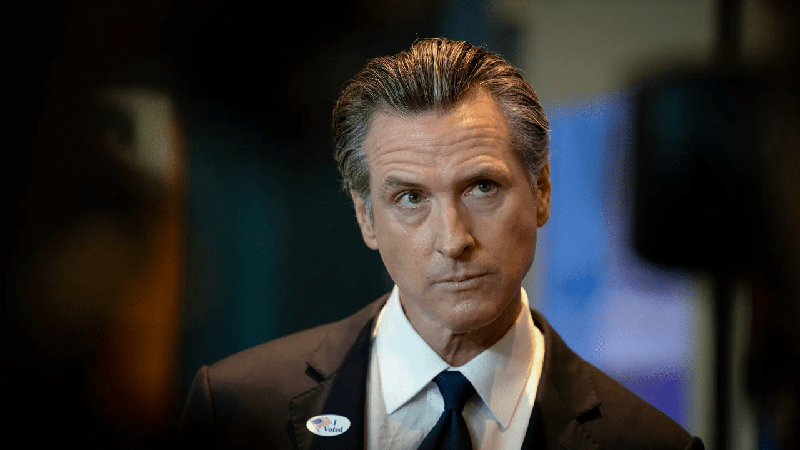
Gov. Gavin Newsom addresses the media after casting his ballot on election day at the California Museum in Sacramento on Nov. 8, 2022. Photo by Miguel Gutierrez Jr., CalMatters
By TIMOTHY PERRY, special to CalMatters
Timothy Perry is a private attorney. He was co-chair of Newsom’s 2018 “Defending California Values” policy committee and a former chief of staff at the Governor’s Office of Emergency Services.
The record is now clear, and the numbers are staggering.
In 2018, Gov. Gavin Newsom won 62% of the general election vote, the most of any Democratic governor in state history. In 2021, Newsom beat a recall effort with the same percentage of voters choosing to retain him. While some votes remain uncounted, Newsom is poised to claim 59% or more this year – a resounding double-digit win for a second term.
These are historic figures. Among Newsom’s recent predecessors, only George Deukmejian earned 60% even once, eking out almost 61% in his 1986 reelection bid following a sub-50% performance in 1982. Compare this with then-Gov. Ronald Reagan, who won 57% in 1966 before falling under 53% in 1970; Pat and Jerry Brown, who together averaged 55% across six elections; Arnold Schwarzenegger, who never exceeded 56%; and Gray Davis and Pete Wilson, who hovered in the high 40s and 50s.
To find a governor whose electoral success rivals Newsom’s, one must turn back the clock almost 80 years to 1946, a decidedly less partisan era when Earl Warren won 91% of the vote in his reelection bid (as nominee of both Republican and Democratic parties), and 64% in 1950.
To match Warren in vote-getting – that is rarefied political air. But skeptics will discount Newsom’s success in predictably superficial ways.
The first objection is that Newsom benefits from the structural advantages of a deep blue state. Yet this alone cannot explain such wide margins. The fact is that Newsom draws surprising support from non-Democrats, including 48% of California’s independents, according to an October survey by the Public Policy Institute of California. Roughly 13% of California Republicans approve of Newsom’s performance so far.
For perspective, the same poll found President Joe Biden drew a more modest 44% approval from California independents and only 8% from Republicans, contesting the national narrative of Newsom as partisan pugilist and Biden as conciliator. But it is revealing in another way, too. It underscores Newsom’s support across the political spectrum, the secret sauce to winning such high vote shares in a state whose registered voters are still mostly non-Democrats.
The second objection is that Newsom only looks strong because his opponents are so weak. This is also wrong. Many conveniently forget that the 2021 recall showed real momentum until Newsom overcame it in the latter stages of the campaign. It also overlooks that challengers and outside groups have spent hundreds of millions of dollars trying to defeat Newsom across three gubernatorial contests.
The best theory for Newsom’s success is also the simplest: Voters think he is doing a good job. Even if there is disagreement over his approach to issues like housing and COVID-19, there is a broad appeal for his no-nonsense leadership style and ambitious goals.
None of this is to suggest that Newsom has time to enjoy a victory lap. Homelessness is still bad and getting worse. Poised to become the world’s fourth-largest economy, California’s cost of living is unbearably high. Californians are feeling the brunt of climate change and increasingly view crime as a top concern.
In this sense, Newsom’s historic vote share is much more than political trivia or fodder for horse race commentary. Rather, it should be the indispensable tool for uniting constituencies and improving some of California’s intractable problems.
In other words, the question is not whether Newsom is historically popular with California voters – he is. The question is instead: how will he put that popularity to good use?
Articles which extol the virtues of a report or article put out by a local newsroom.